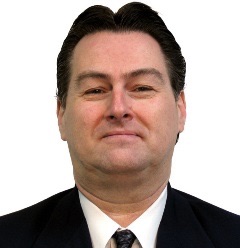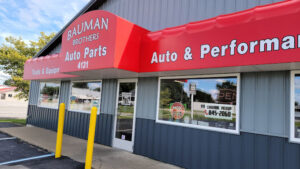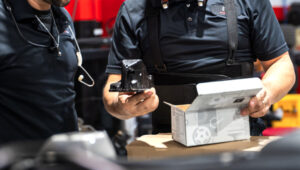The answer to maximizing opportunities in a new reality may not be as complicated as one might think, whether you’re a supplier, distributor, or shop
This is our third installment of Rethinking Loyalty. Our first article focused on the changing attitudes of Millennial and Gen Z consumers, and the second focused on how supply chain issues created by the pandemic have changed customers’ purchasing habits. I also noted that, in my opinion, the combination of these events had led us to a world where a customer’s loyalty is more driven by performance than longevity, and it was not likely that purchasing habits of our customers would return to pre-pandemic behavior because we have entered a new reality. Again, my opinion.

So, what are we to do? Ironically, the answer to maximizing opportunities in a new reality may not be as complicated as one might think. To serve our industry, regardless of whether you operate a repair shop, manufacture replacement products, or are involved in the distribution of auto parts, your primary function is to fulfill and satisfy needs.
This is the beauty of our industry; we are not forced to create a demand. Instead, we are left to convince our targeted customers why our companyis the best choice to serve an existing need. The key to the riddle is understanding the market you serve, the segment of the market you have targeted, and then building a business model built to perform and be best in class.
While each segment of the aftermarket has its unique challenges, all share three essential goals: to make a profit when an automobile needs a repair or service; to service our customers in a manner that makes it easy to become a repeat customer; and to keep comebacks and warranties to an absolute minimum.
The industry’s common goals spark questions each segment can use as a reality checklist. If you’re a manufacturer, do you consistently supply quality products and high fill rates that provide all involved a profit opportunity while remaining competitively priced in the market? If you’re a jobber/distributor, have you aligned yourself with a supplier and customer base that allows you to provide consistently high service levels of quality products at prices where everyone makes a reasonable profit? If you are a repair shop, have you aligned yourself with quality parts providers that consistently supply high levels of service and availability? The answers to these questions are the fundamentals of performance.
The industry’s common goals and essential questions are not to indicate that solving the loyalty riddle is a simple exercise. Quite the contrary. The industry has never been more complex. We have parts proliferation due to a large and aged fleet, technology under the hood has never been more sophisticated, and never has the market been so competitive due to consolidation throughout the supply chain. This is why each participant must assess what they need to win in their market and surround themselves with suppliers that will empower them to execute their brand promise.
The aftermarket, for lack of a better term, has become the ultimate balancing act between interdependence and self-reliance. Now more than ever is the time for collaboration up and down the supply chain. Not a unique sentiment, but there is a difference between talking about the need for partnerships and doing the needed collaboration that creates a mutually beneficial relationship. The days of a cookie-cutter approach and waiting for someone else to tell us how we should run our business will not win a meaningful share of the market. The truth is each participant should become the expert for their market, and this expertise should be used to empower partnerships that will allow one to generate loyalty in a new reality where customers are loyal, one order at a time.
Finally, one last question to ponder. As you read this article, one of your customers is choosing one of your competitors for a product or service where you could have met the need at a better value — why did they do so? There is only one way to find out. Ask.
Sharp’s career began in his father’s repair shop in 1967 and then moved to the parts side of the industry in 1973. For the last 48 years, Sharp has worked exclusively in the replacement parts segment of the automotive aftermarket. In 1988, Sharp began what would turn out to be a 33-year career with WORLDWIDE Trading Company/ WORLDPAC, from which he retired in 2021. He is currently studying for his master’s degree. Sharp is currently working as an Executive in Residence at the Endeavor Institute and can be reached at ssharp@endeavormgmt.com










Comments are closed.